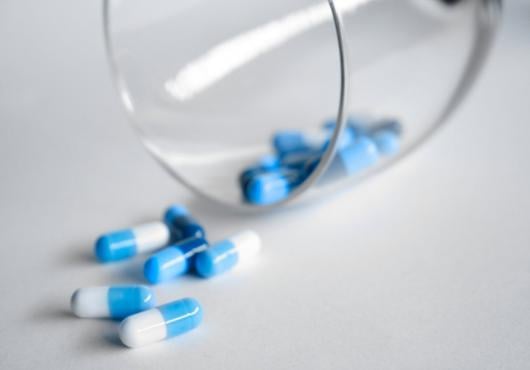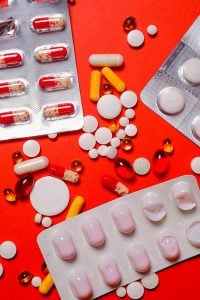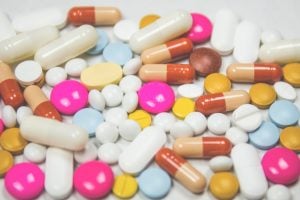
The pharmaceutical market has seen a dramatic transformation in recent decades, mostly due to two primary reasons; the nature of pharmaceutical products themselves, and regulatory compliance requirements. Both carry massive significance in cold chains, transforming them in turn to suitable forms. Therefore it is vital to explore both, as well as said shifts in the market and procedures, as we discuss cold chain pharmaceutical solutions and their importance.
Changing pharmaceutical products
The evolution of drug portfolios has found them steering towards structurally complex biotechnology drugs, such as biologics and biosimilar drugs. Their active pharmaceutical ingredients thus tend to have more strict temperature requirements and shorter shelf lives; many of the best-selling pharmaceutical products are now biotechnology-derived, and require storing and handling at 2–8°C. Most notably, insulin remains the globally largest cold-chain biopharmaceutical product, and its demand remains high.
Concurrently, medications that are developed via modifying the body’s own substances, such as blood and cells, have also seen an increase in demand – requiring body temperatures during transit themselves. Thus, given that many modern pharmaceuticals now come with various temperature requirements, the very term “cold chain” may seem less encompassing than the newer term “temperature control”. Yet, practically, cold chain solutions remain vital, regardless of the naming conventions.

A shifting pharmaceutical market can be clearly observed. Alt tag: Vials with blue liquids.
Biologics, biosimilars, and their pipeline
An important set of definitions we should consider at this point is that of biologics and biosimilar drugs. Biologic drugs are large, complex proteins manufactured from living cells. Biosimilars are approved copies of biologic drugs; similar, but of course not identical, to the original, and less costly. Generic drugs, on the other hand, are copies of chemical or synthetic drugs – and those different types compete in the pharmaceutical market. Experts hope that both generics and biosimilars can lower the cost of biologic drugs, strictly due to competition.
The pipeline growth of biosimilars is thus impressive. From July 2017 to February 2019, the number of biosimilars for some major reference products or classes in the development pipeline had an average increase of ~54%. From a minor 6% increase for Rituxan, to a massive 155% increase for Enbrel, we can safely observe an overall increase in biosimilars’ supply. This upward trajectory observed over those 18 months does not show signs of slowing down, either.

The supply of medicine continues to rise to meet the demand. Alt tag: Many pills of different colors.
Regulatory compliance
This shift to biologics and biosimilars then injects considerable complexity into the overall distribution process. Products are highly demanding in terms of their condition and temperature tolerances; any lapse in maintaining appropriate conditions in the supply chain can have a tremendous negative impact on a drug’s efficacy. According to a study done for Cargosense, degraded pharmaceuticals come in considerably higher numbers than one may realize;
- Logistics issues seem to account for approximately 30% of scrapped drugs and pharmaceuticals
- Broken cold chains cause damage to roughly 20% of all temperature-sensitive products
- Incorrect shipping accounts for nearly 25% of vaccines reaching their destination degraded
It is thus understandable that temperature failures are not an issue to be overlooked. That they are estimated to cost the biopharmaceutical industry nearly $35 billion each year is a noteworthy fact in itself, but the danger to patients remains as well. It is thus of paramount importance, both financially and ethically, that cold chain solutions are reinforced at every opportunity. It stands to reason, then, that if you are in this business yourself, it's in your best interest to employ a temperature-controlled shipping company you can trust.
New challenges and environmental hazards
In this context, a growing concern is end-to-end visibility. Traditional vaccines are still subject to cold chains, but some newer products can withstand higher temperatures with minimal or no degradation risk. While this may reduce the need for heavy cooling equipment, temperature limits to pharmaceuticals remain – and so does the need for monitored room temperatures, even for those new products. However, gene-based and biological medicines still require cold chains; as mentioned before, such products have lower temperature limits and shorter shelf lives. Especially in cases of medical products that are personalized to the level of being coded to the patient’s genes, safe, secure, and fast means of transportation are vital.

Traditional medicine may not always require constant low temperatures, but newer products often do.
However, speed and efficiency may still be hampered by unplanned stops. Such stops are most often not the fault of health care workers themselves – the WHO insists that they know how to monitor cold chains efficiently. Unfortunately, the same does not apply to officials at ports, airports, and border crossings, or various transportation providers and workers. Unnecessary delays that may occur due to import files remain a risk; errors of any kind may be found in an estimated 10% of all electronic customs’ import files. Such delays can inevitably damage pharmaceutical products, due to rising temperatures or other factors. This will, in turn, result in more medical waste, which is an equally important subject in itself.
Environmental hazards are also a factor in this context, then, especially for shipments to less-developed nations. From demanding climates and difficult routes to inadequate equipment, such challenges are only natural in such a complex, growing market. An efficient way to meet such challenges is, predictably, through proper planning; namely, establishing supply line routes and acquiring the packaging and equipment best suited for them. Real-time data can also be invaluable in this regard.
Solutions
At this point, it should be clear that maintaining cold chains is of paramount importance. Doing so efficiently ensures that suppliers and companies reduce potential financial losses due to damaged products and that pharmaceuticals reach the patient with full efficiency and so serve their purpose. It is thus both financially and ethically imperative; such trained professionals as the ones in fourwinds-bahrain.com can guarantee maximum cold chain efficiency to suit your needs in this regard.
Technology and professionalism can ensure that such endeavors are successful. Real-time temperature control can allow suppliers to identify both temperature excursions and the most vulnerable parts of a cold chain. Optimal monitoring that guarantees visibility to all concerned parties, and ideally can deliver data in real-time, is vital and guarantees safer transit. Such continuous analysis of temperature data can also help identify the safest distribution routes and shipping lanes, which can only be beneficial to all parties involved.






